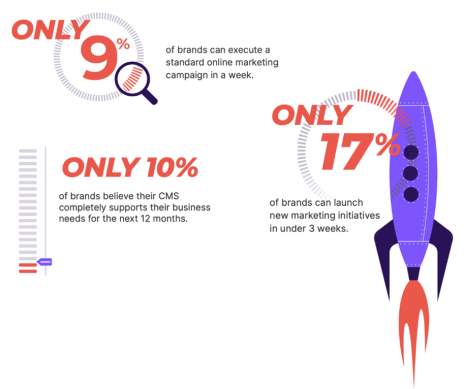One of the sectors that I’m hearing a lot about for 2023 is Retail Technology. I guarantee that you are aware of some of the end results of the technology in this sector—buying online, self-checkouts, and inventory management—even if you’re unfamiliar with Retail Tech stocks.
Essentially, retail technology is all about the digital tools and innovations utilized by both brick-and-mortar retailers and e-commerce platforms to facilitate their in-store and supply chain operations. Those tools were thoroughly tested during the pandemic when online sales necessarily boomed. And that’s when the industry began to discover that they needed better digital tools and platforms.
As of the third quarter of 2022, 14.8% of all retail sales were online. And in 2021, retail m-commerce (mobile commerce) sales rose to $359.32 billion—a 15.2% increase over 2020. Furthermore, it is forecast that by 2025, retail m-commerce sales should be as high as $728.28 billion, accounting for 44.2% of retail e-commerce sales in the US.
[text_ad]
These growing platforms for the retail industry require more and more cutting-edge technology to keep up with the expansion.
Research company Incisiv—in a survey of more than 350 companies in the U.S., U.K., and Germany—reports that “a vast majority of brands do not have the marketing platforms in place to enable them to meet their current business demands or hit their growth targets in the near future.”
The following graphic is a frightening look at how far behind the tech curve the retail industry is finding itself.
Source: https://explore.contentstack.com/
And while the majority of retail sales are still conducted at the brick-and-mortar level, that platform also requires more innovative technology, such as RFID, Radio Frequency Identification tags that are on almost every product you buy today. Walmart was one of the early adopters of RFID, beginning to tag their items in 2003. As of the start of last year, the company issued a mandate to their suppliers that the items they purchase from the vendors must all be tagged—before they arrive at Walmart. It’s no surprise that this industry is growing at an annual rate of 11.9%.
There’s a huge array of digital technology, ranging from simple RFID tags to drone delivery, all the way to JD.com stores where all the employees are robots! Yes, it’s true. At the beginning of 2022, JD.com launched two totally robotic stores (named ochama) in the Netherlands, where robots not only serve customers but also deliver packages.
Bottom line, retailers are embracing digital technology for a number of reasons, including:
· Streamlining store operations to save time and money (as much as 8% on tech that kept the supply lines operating at 100% capacity).
· Collecting valuable data about customer preferences through technology such as QR (quick response) codes. And customers find them useful, too, especially when a human clerk is not around, and the store has a price reader available to customers.
· Creating a connection with customers who don’t really want to take the time or energy to interact with a human contact.
The outlook for expanded and improved retail technology is attractive. Industry pacesetters forecast that the following tech areas will be the ones to watch:
1. QR codes
2. RFID technology
3. Augmented reality (AR), which is a technology that places graphics over real-world settings, tech such as Snapchat filters—cartoon ears, glasses, or features that appear over your face and move when you do. We’ll also see it in virtual fitting rooms and product tours.
4. NFTs (non-fungible tokens), such as images, video, tweets, and audio—owned by one person. This information about the token is stored on a secure and decentralized data record known as a blockchain. In 2021, sales involving NFTs were $13.9 billion. Note that with the current problems in the cryptocurrency environment, I imagine the NFT sector will also take a while to recover.
5. Smart checkout, including contactless payment (tapping), buy now, pay later, digital receipts, and self-checkout.
6. Store management, a blending of people and technology to improve payroll, analytics, and employee performance.
In looking at the industry, investors have a variety of options. They can focus on companies that provide retail tech or the retailers who are expanding their use of retail tech. Here are three that I found that may be attractive to you:
Company | Price ($) | P/E | Dividend Yield (%) | Analyst Ranking |
Dick’s Sporting Goods Inc (DKS)
| 123.10 | 10.83 | 1.62 | Strong Buy |
Mogu Inc ADR (MOGU)
| 2.60 | n/a | n/a | Strong Buy |
Cisco Systems Inc (CSCO) | 47.88 | 17.28 | 3.19 | Strong Buy |
As always, please make sure that any of these stocks you may choose fit your personal investing strategies and risk profile. Happy shopping!
To learn more about Cabot’s favorite stocks this month, click here to download your free report.
[author_ad]


